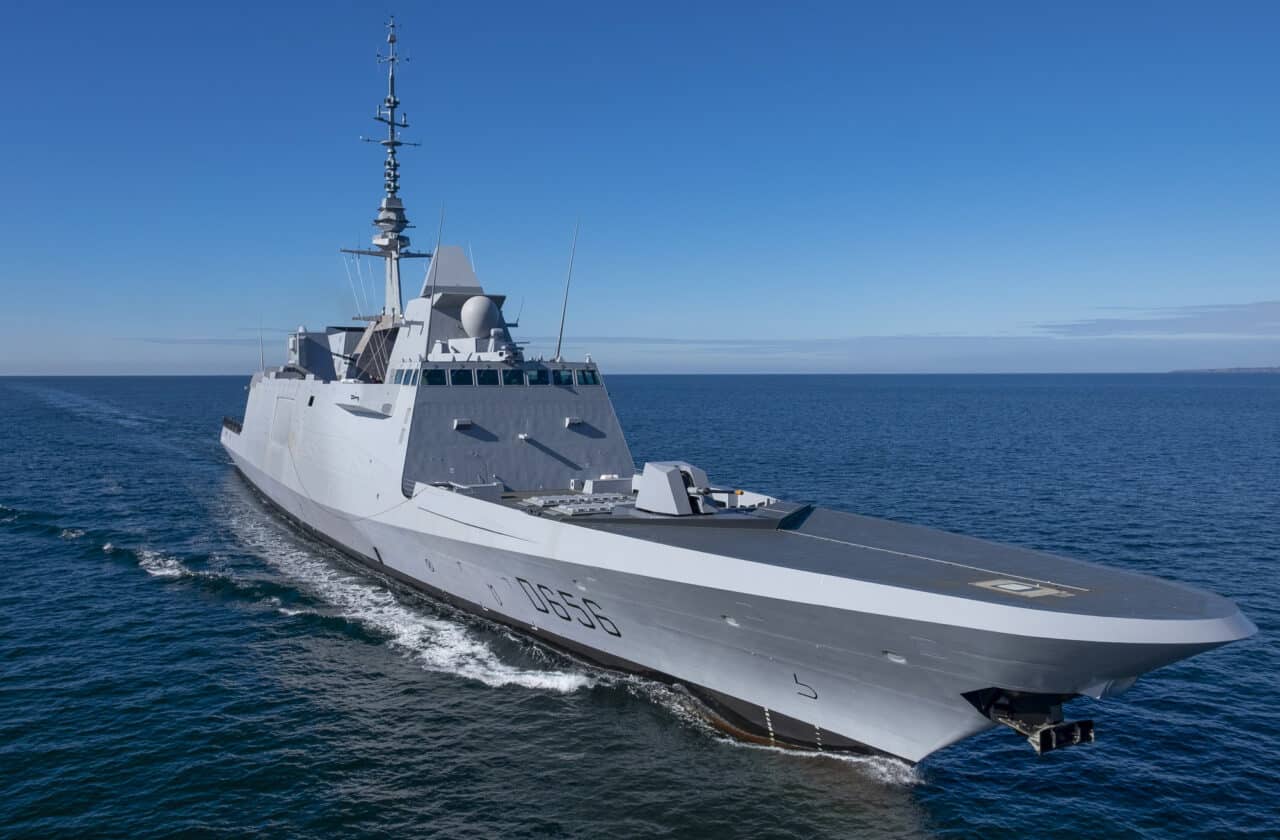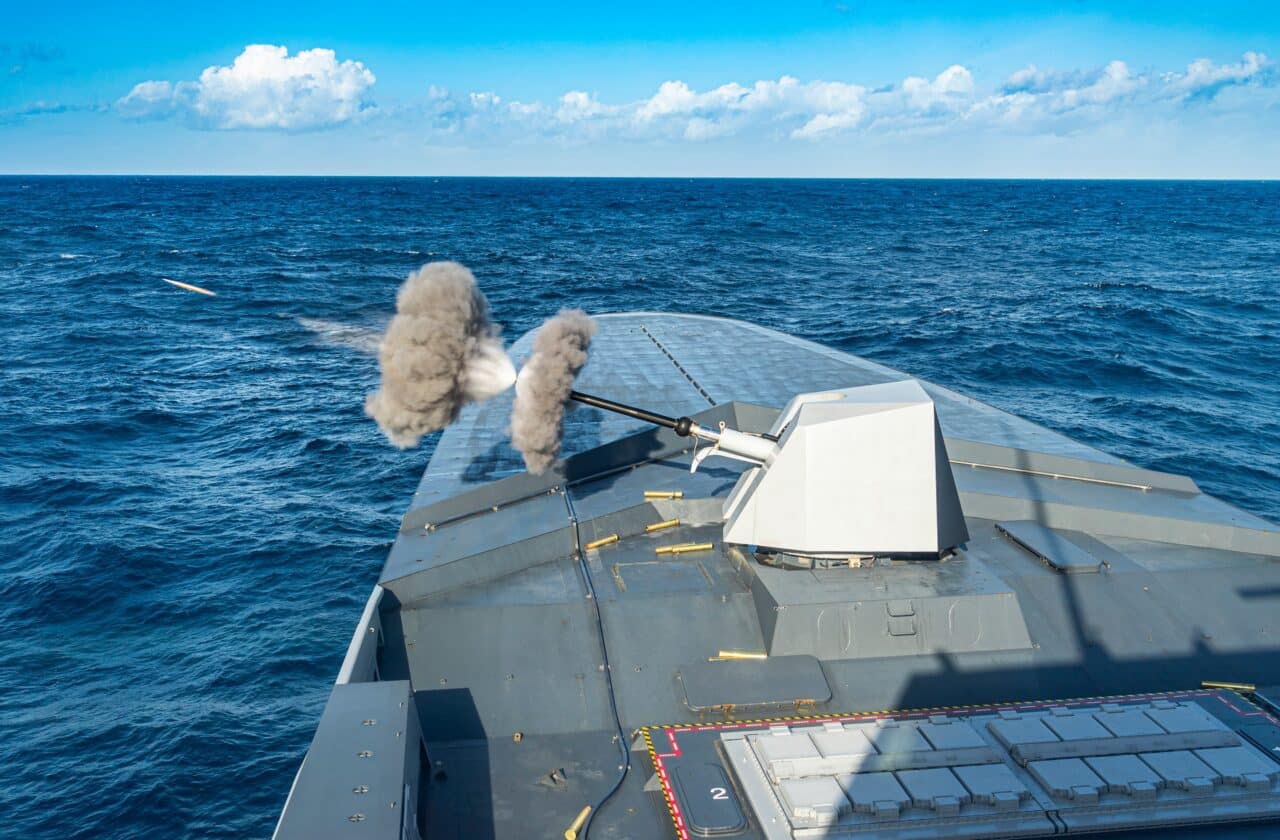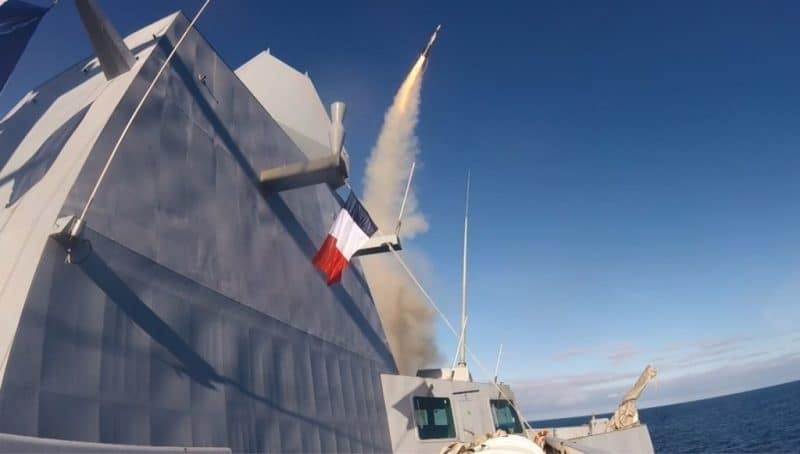Many naval specialists have, on several occasions, called for strengthening the anti-aircraft defenses of first-rate French frigates, and more generally, of ships of the French Navy.
Indeed, traditionally, the French Navy has favored the number of hulls over their armament, in a context, it is true, of lower geopolitical tensions, and budgetary lean cows.
However, the latest intervention by the Minister of the Armed Forces, on March 26, referring in particular to the consumption of Aster missiles by frigates deployed in the Red Sea, outlines a perspective that is difficult to ignore, both by the ministry and by the Admiralty.
In this section:
22 Aster missiles fired in 4 months by two French frigates
Sébastien Lecornu indicated, during this press briefing, that the two frigates, deployed in the Red Sea from the end of November 2024, first the FREMM Languedoc frigate of the Aquitaine class, until the end of January, and since then relieved by the FREMM Alsace Air Defense Frigate, of the eponymous class, have launched, over this period, 22 Aster missiles against Houthi drones and missiles, to protect themselves and the escorted commercial ships.

However, this number represents almost half of the total number of Aster 15 and 30 anti-aircraft missiles on board these two frigates, 16 for Languedoc, 32 for Alsace, while it is difficult to say that the theater in which they evolved, was particularly intense (all things considered), nor that the missiles and drones launched by the Houthis required greater ammunition consumption.
This Retex also shows that, from now on, even theaters of less technological intensity, the Houthis not being renowned for their high-tech weapons, despite Iranian support, expose French ships to major aerial and ballistic threats, requiring to have strengthened capacities in this area.
The insufficient size of 16 Aster of the Aquitaine and Amiral Ronarc'h class frigates of the French Navy
This need to strengthen anti-aircraft defenses concerns, more specifically, two classes of frigates representing the bulk of the first-tier surface fleet of the French Navy, the FREMM frigates of the Aquitaine class with six ships, and the five future frigates. FDI of the Admiral Ronarc'h class.
In fact, both only have, in this area, two SYLVER 50 vertical launch systems, capable of accommodating, in total, 16 Aster 15 anti-aircraft missiles, with a range of 50 km, and Aster 30, which can exceed 100 km and has low-level anti-ballistic capabilities, as well as a 76 mm cannon.


75% of this article remains to read,
Subscribe to access it!
The Classic subscriptions provide access to
articles in their full version, and without advertising,
from 6,90 €.
Newsletter subscription
Register for the Meta-Defense Newsletter to receive the
latest fashion articles daily or weekly



Thanks for the summary!
What about MICA VL as well? Maybe less expensive for more vectors.
Furthermore, it seems to me that MBDA is working on a simplified solution for Sylver launchers, with regard to the compatibility of the different missiles in the catalog (already mentioned in your articles and confirmed by one of my reliable sources).
Indeed, but that requires putting in new shooting cabinets, adapting the combat system, etc. It's much longer, and heavier, than adding two Sylver. Afterwards, there is no real point today in using Mica VL NG rather than Aster 15. The price difference is minimal, and no performance gain. It would be interesting if MICA VL could be multipacked on Sylver. But that is even longer and more expensive, since it requires redesigning the SYLVER, designed economically.
Exactly, what would be the extent of the work on the SYLVER system if we wish to multipack MICA NG?
Indeed, as already indicated in at least 2 articles on this site, bringing the SYLVER System to a modularity close to that of the American Mk-41 would be of interest.
Given the announced performances of the MICA NG in the air-to-air version, it could be a serious competitor for the RIM-162 ESSM. Except that the latter is by default “quadpacked” (4 missiles per firing cell). And he has a string of export victories as a result.
As for the LMP, it is an interesting solution but limited to the range (and maximum altitude) of the Mistral SATCP missile. And therefore especially effective against light drones and other minidrones. Against heavy drones and various missiles, heavier anti-aircraft missiles are needed like the current MICA VL minimum.
This would require redesigning the VLS almost entirely, at least the containers themselves, and the connections to the cabinets. This would obviously have many advantages, but it is a real project, probably lasting several years. In this article, it is more about Quickwin, which can be deployed over a much shorter timetable, and at lower costs.
Indeed, the delays will surely be too long for the current conflict in the Red Sea. Would it be possible for you to talk about it more specifically in a future article?
I don't have any more information than that on this subject. But if information comes out on the subject, I will not miss it. That said, there is no indication that this is in the pipeline today.
What is the point of equipping a building with LMP if it means leaving 4 mistral modules permanently?
The day other needs (decoys, MMPs, 70 mm rockets, depth charges) arise, how many tens of minutes will be necessary to replace a module?
Will there be storage space for reserve modules?
Aren't the double mistral or sadral launchers equivalent to the LMP for anti-aircraft?
Wouldn't it be time to place a bulk order of 50 Rapid Fires to be delivered over 5 to 7 years to achieve economies of scale? 8 on supply tankers, 2 on PA, 13 on frigates, 10 on patrol boats, 2 on Long Island…
Precisely, the modularity of the LMP makes it possible to adapt its load to the immediate threat. You need to harden the CIWS, you can go up to 16 Mistral. Are you anticipating naval drones? You can put an Akeron module and a 70mm rocket module, as well as a smoke launcher module. It's a pretty brilliant system.
The Rapid Fires are already planned for the three BRF (oil supply vessels), the ten offshore patrol vessels and the six GBGM (mine warfare). It is true that adding more to the fifteen first-rate frigates, the three PHAs and the PAN, would certainly be welcome.
All 76mm cannons of the French Navy must also be fully equipped with the STRALES anti-missile system with the DART anti-missile shell, even more effective than the Rapid-fire.
https://electronics.leonardo.com/documents/16277707/18367594/OTO+Strales+and+DART.pdf?t=1674468800026
A 76 mm Oto-Melara and a Rapid Fire are not the same footprint, nor the same depth. We cannot compare the two. On the other hand, in fact, the Strales and the DART shell are very effective. On the other hand, it suffers from a shooting limit, which can only change by increasing the number of pieces.
Likewise the MISTRAL 3 can be used against small ships since it neutralized an AMX-30 tank during a test more than a decade ago, so no need for AKERON or 70mm rockets for it. LMP but only MISTRAL 3 in massive quantities.
Never heard of a Mistral firing against an AMX-30. And I don't see how this missile could pierce a tank, given its warhead designed to launch tungsten balls to create a cone of destruction. That's the equivalent of a 12,7 volley, and it can't pierce a tank. It can be used against unarmored vehicles, possibly against ships, but its homing device is not really designed for direct fire in heavy seas. I wouldn't bet on it. The Akheron begins by gaining altitude, which gives it a much clearer vision of the target.
Two additional SYLVER 50 VLS on the 5 FDI of the Amiral Ronarc'h class and two additional on the Forbin and Chevalier Paul, however efficient these modifications would be, would de facto lead to a significant increase in the need for missiles to equip the buildings concerned (160 Aster for the FDI and 128 for the FDA) therefore by definition the cost of buildings. This will require an even more significant increase in the volume of ammunition in stock.
As always, it will be a budget problem: if these changes are made, it will be to the detriment of another or other programs.
This is absolutely correct. Now, we must also consider other factors, such as the human, political and budgetary price that would result from the loss of a €700/800 million ship with more than a hundred French sailors on board, because insufficiently protected.
With a fixed budgetary scope, the question arises as to whether it is better to have 15 moderately armed hulls, likely to have holes in the protection system, or 14 or 13 hulls, armed as would be appropriate, taking into account the threat. I don't have the answer, but it is clear that the MN has always favored the number of hulls over armament, and I find that questionable. It seems to me that we should define the armament embarked on a first-rate frigate, in relation to the calculation needs, and not in relation to the budgetary calculations to deduce the possibilities. Going from SEM/F-8 or F1/Jaguar/2000 to Rafale, we made a huge leap in terms of operational potential, but we agreed to divide the fleet in half, because we needed a Rafale to be efficient. I would tend to apply the same reasoning here. To choose between 300 Mirage (15 frigates) and 200 Rafale (13 much better armed frigates), shouldn't we move towards the second hypothesis?
Finally, between an FDI Marine Nationale with 16 Aster, 8 Exocet and a 76 mm, and an FDI with 32 Aster, 32 Mistral 3, 8 Exocet (so in total 72 missiles), a 76 mm and a Rapid Fire, I am opinion that it is the second which will attract attention on the international scene. 72 missiles, we are not that far from the 90 missiles of the Burke, and exactly at the same level as the Constellation (thanks to the ESSM and with half as many long-range surface-to-air missiles), which cost twice as much , and which will not be as effective in ASM (because in ASM, we are the best, and that's all!).
I share your opinion but given that we are already short oil in terms of first-rate buildings, I don't see how we could decently reduce their number to finance up-to-date armament for the remaining ones.
As for the choice to favor numbers, it is, in my opinion, the residue of the old principle of fleet in being which, for example, caused the Hood to be sent to the bottom with its crew of 2000 men per second salvo from the Bismark: its modernization had not been completed by the reinforcement of its armored deck but on paper the Home Fleet had a 48 t battlecruiser.
Good evening Fabrice,
I seem to have read last month that the Paseo XLR was going to be installed on the Aquitaine and Alsace class frigates and that it offered an additional guarantee in the face of the low number of missiles. So that's not enough?
The Aquitaine class is not intended for anti-aircraft, will reinforced anti-aircraft warfare not be to the detriment of submarine warfare?
Bonsoir
The Paseo is undoubtedly an asset, to better use the 76 mm. But this cannon is only effective for self-protection, not for escort. And it has its limitations, including in terms of space coverage. If it flies a little high, a little fast, or behind the frigate, it's out of range. This is a real asset, but it does not constitute a response commensurate with the evolution of the threat.
For the Aquitaine, like the FDI, they are above all ASM, in fact. But as we only have 15 frigates, including only 4 AA, it was Languedoc that we sent to the Red Sea, where the submarines were not legion.
Densifying such as evoking AA capabilities would not deteriorate ASM. On the other hand, it is very difficult to do both at the same time, if not impossible.